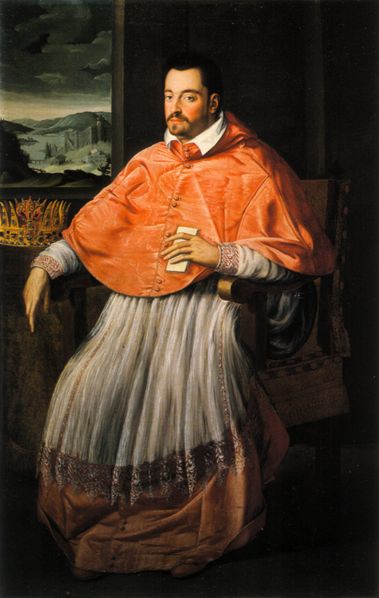<Back to Index>
- Inventor and Businessman Henry Ford, 1863
- Painter, Architect and Art Historian Giorgio Vasari, 1511
- Grand Duke of Tuscany Ferdinando I de' Medici, 1549

Ferdinando I de' Medici, Grand Duke of Tuscany (30 July 1549 – 17 February 1609) was Grand Duke of Tuscany from 1587 to 1609, having succeeded his older brother Francesco I.
Ferdinando was the fifth son of Cosimo I de' Medici, Grand Duke of Tuscany and Eleonora di Toledo, the daughter of Don Pedro Alvarez de Toledo, the Spanish viceroy of Naples. He was created a Cardinal in 1562 at the age of 14 and succeeded his brother Francesco I de' Medici, Grand Duke of Tuscany in 1587 at the age of 38. He had already proved an able administrator in Rome. He founded the Villa Medici in Rome and acquired many works of art, which he then brought back to Florence with him. He retained the office of Cardinal after he became Grand Duke, until he married Christine of Lorraine in 1589. Until the advent of Pope Urban VIII, Cardinals were not obliged to become ordained clerics, even though most were ordained in the Holy Orders of Deacon, Priest, or Bishop. Thus, the title and power associated with the title became greatly coveted.
When he died in 1609, he left four sons, of whom the oldest, Cosimo, inherited the throne at the age of 19. Ferdinando's daughter, Claudia (1604-1648) married Federico Ubaldo, Duke of Urbino, whilst another daughter was Maria Maddalena de' Medici. In
many ways, Ferdinando was the opposite of his brother who preceded him.
Approachable and generous, he set out to rule mildly. He re-established
the justice system and was genuinely concerned about the welfare of his
subjects. During his reign, Tuscany revived and regained the
independence his brother had given up. Ferdinando
fostered commerce and gained great wealth through the Medici banks,
which were established in all the major cities of Europe. He enacted an
edict of tolerance for Jews and heretics,
and Livorno became a haven for Spanish Jews, expelled from Iberia in
1492, as well as other persecuted foreigners. He improved the harbor
Cosimo had built and diverted part of the flow of the Arno River into a canal called the Naviglio, which aided commerce between Florence and Pisa.
He fostered an irrigation project in the Val di Chiana, which allowed
the flatlands around Pisa and Fucecchio and in the Val di Nievole to be
cultivated. His foreign policy attempted to free Tuscany from Spanish domination. After the assassination of Henry III of France in 1589, he supported Henry IV of France in his struggles against the Catholic League.
Ferdinando lent Henry money and encouraged him to convert to
Catholicism, which he eventually did. Ferdinando also used his
influence with the Pope to get him to accept Henry's conversion. Henry
showed no appreciation for these favors, and Ferdinando let the
relationship cool, maintaining his cherished independence. He supported Philip III of Spain in his campaign in Algeria and the Holy Roman Emperor in his against the Turks. For these undertakings, he found it necessary to raise taxes on his subjects. He finally obtained the formal investiture of Siena, which his father had conquered. Ferdinando also strengthened the Tuscan fleet, and it saw victories against pirates on the Barbary coast in 1607, and against a superior Turkish fleet the following year. He also dreamed of a small African empire, and then considered the possibility of a colony in Brasil. Ferdinando organised an expedition in 1608 under the command of Captain Thornton to northern Brasil and the Amazon river in order to create a colony. He was succeeded by his eldest son, who reigned as Cosimo II.